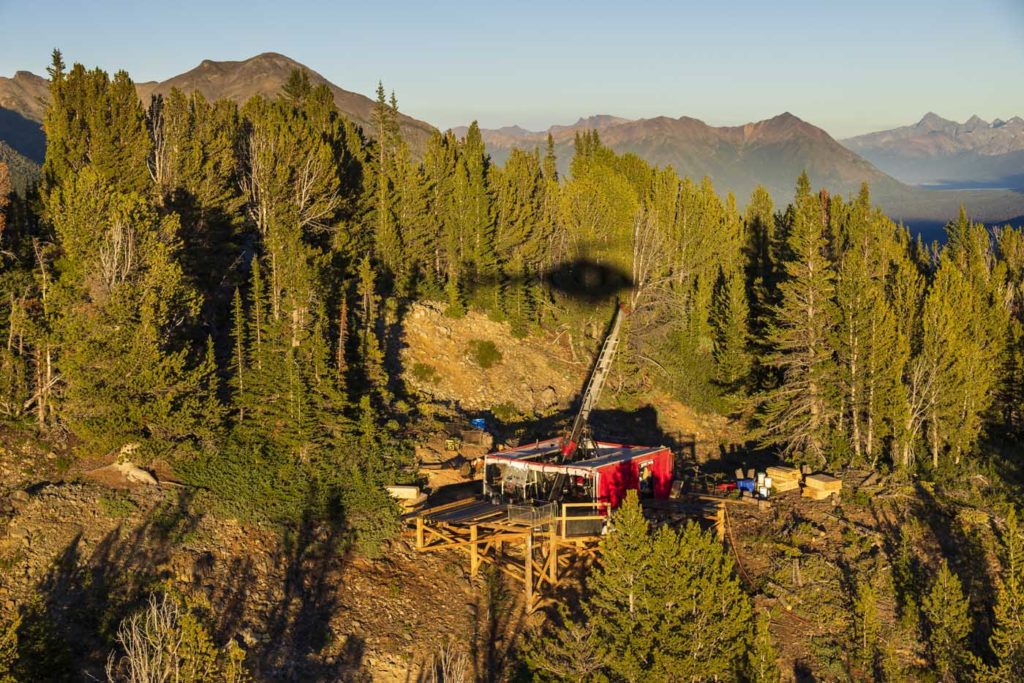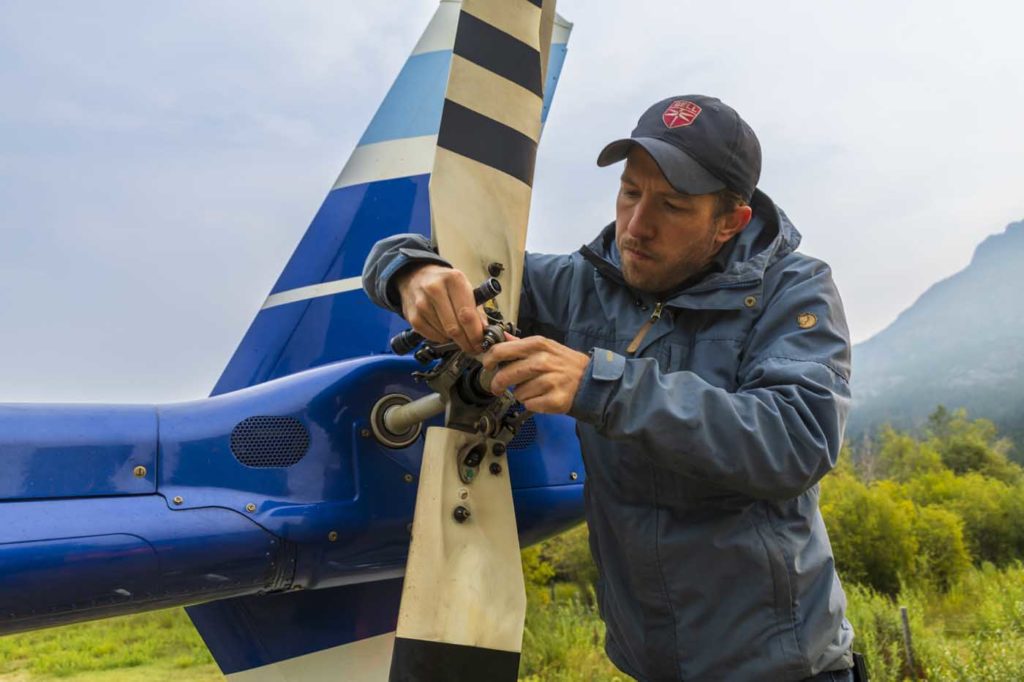Photos by Heath Moffatt
The Cariboo Chilcotin Coast region of British Columbia is a land of mountain ranges and plunging valleys, forests and fjords. Billed as “a land without limits,” its landscapes are vast, beautiful and wild. The rugged landscape attracts tourists, adventurers and filmmakers from around the world, while its natural resources offer plentiful opportunities for mineral exploration.
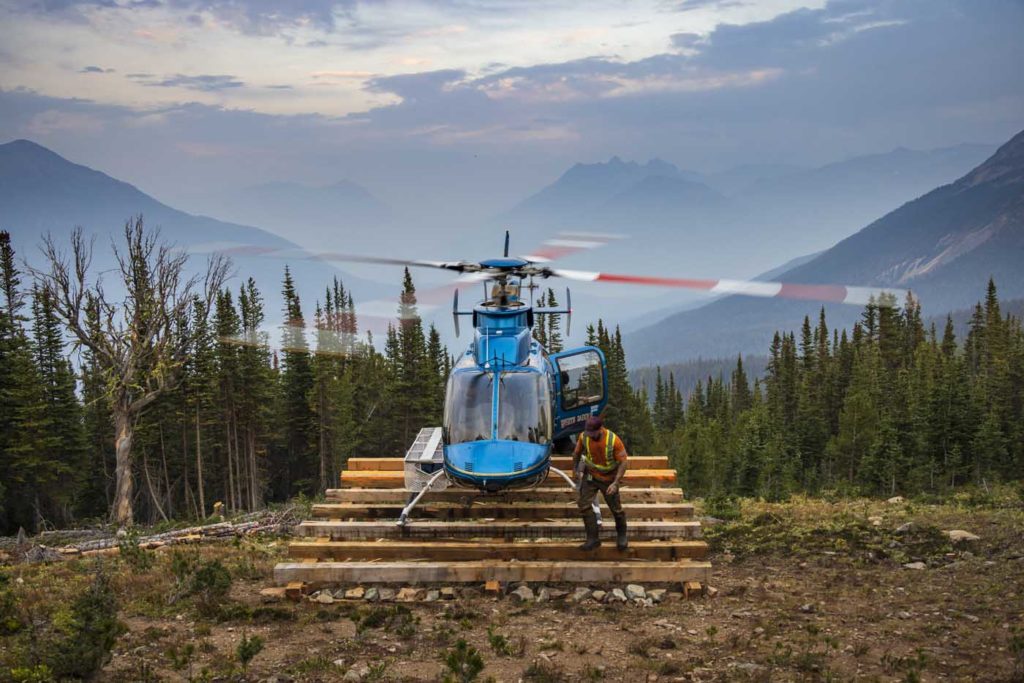
It’s not a surprise to find helicopters playing a crucial role in such an environment. However, it might not be the first place you’d expect to find the first commercial model of an original equipment manufacturer’s (OEM’s) latest type. But it’s exactly where the first commercial Canadian Bell 407GXi entered operation, with utility specialist White Saddle Air Services. The operator is based on Bluff Lake, near Tatla Lake in the west Chilcotin area of the province.
“We live in the middle of nowhere,” explained company owner and chief pilot Mike King. “We make our own electricity with a Pelton wheel. We’re off grid — not because we want to be; we have no choice. We had to put a phone line across the lake. If we want to buy a block of cheese, it’s a six-hour drive to the grocery store and back.”
This remoteness has guided the company’s philosophy to buy new aircraft, take good care of them to maximize their value when it comes time to sell, and then put that money toward another new aircraft.

“We aren’t geared up here to do any big maintenance jobs,” said King. “So, what we found works better is buying a machine, running it a few years, and then selling it. We take really good care of it — we’ve got great maintenance and we’ve got really good pilots — so guys like our machines; they know they’ve been taken care of.”
White Saddle was founded by Harry King, Mike’s father, in 1977. Harry had started flying during the Second World War, later setting up an import business in Victoria. He bought an airplane for use with the business, and then a Bell 47G3B1.
Sensing a business opportunity for the helicopter in west-central British Columbia, Harry bought a plot of land alongside Bluff Lake in the Cariboo Chilcotin Region and began building up a client base, including the provincial Forest Service and mountain climbers.
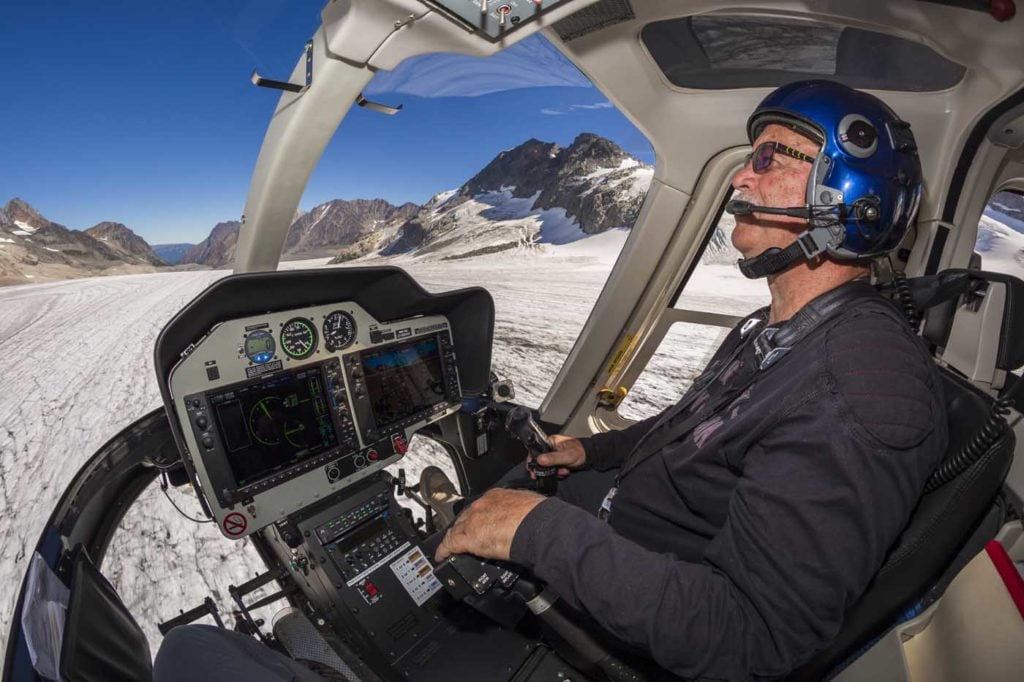
Meanwhile, Mike King had gained his fixed-wing license and helicopter endorsement (Canadian industry legend Ken Norie was his instructor for the latter). He was hired by VIH Helicopters immediately after, and began building up his experience.
“I was just flying surveys, [and] living in a hotel — for me, it was the ultimate job,” said King. “The idea that Dad had was for me to fly for VIH and build up a bunch of experience while he was setting the business up.”
Tragically, while flying down to visit King and get some maintenance performed on the Bell 47 in Port Hardy one day, Harry disappeared in bad weather. King’s brother Dave, a float plane pilot, later found a part of the helicopter in the ocean.
“It was a pretty big shock to the family,” said King, who was determined to press on with his father’s plan.
He continued to fly with VIH to gain more time and the cash that would allow him to buy his own Bell 47 in 1979. He took it up to Tatla Lake, and continued the business Harry had established, with King’s mother, Jen, providing administrative support and sorting the company’s books.
That first year, he flew about 400 hours, working with the forest service, flying tourists, and working from a couple of lodges.
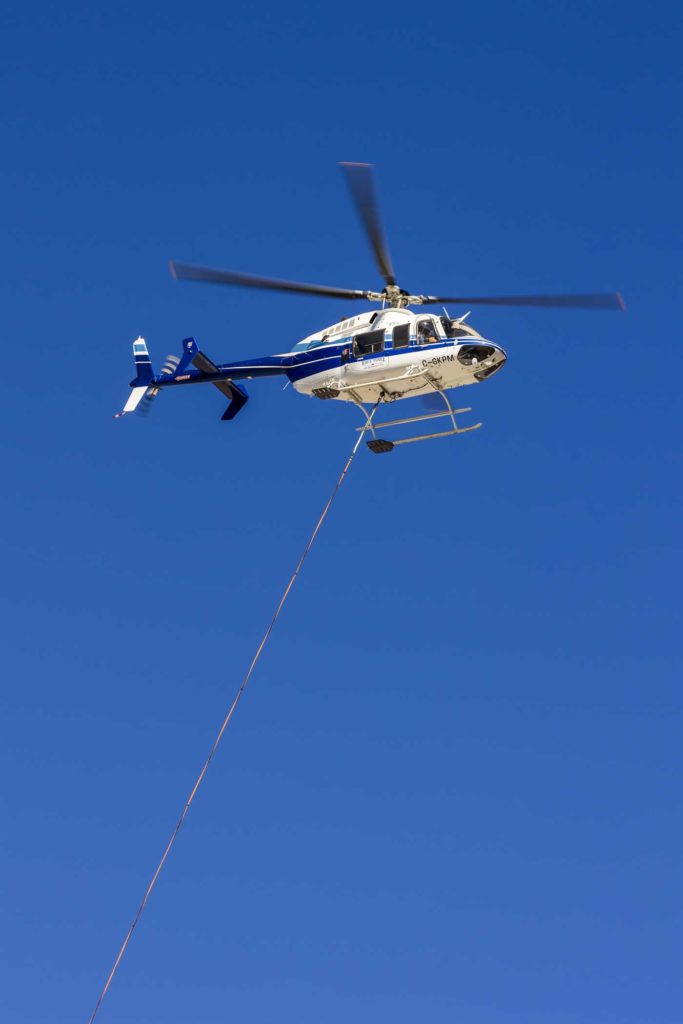
“Then a couple of grubby drillers came up to me one day and said: ‘Can you fly a little drill to the south end of Chilko Lake? We’ve got a claim there and we want to do some drilling,’ ” said King.
That winter, the drillers offered White Saddle a 400-hour contract — if they could supply a Bell 206 JetRanger. King leased an aircraft for the contract, and it worked so well that he bought a used one. He would record 3,600 hours on that aircraft over the next six years, as the company was kept increasingly busy with firefighting, tourism, and government surveys. King’s wife, Audrey, joined the company, taking over the administrative workload from Jen.
One day in 1987, the JetRanger’s engine quit, forcing King to autorotate into trees. He got out unscathed, but the experience helped inform a new strategy for fleet acquisition.
“We decided we’re going to buy a brand new helicopter, borrow a ton of money, and if we ever need any part, we’re just going to use our own stuff,” said King.
The first brand-new aircraft was a JetRanger 3, and King flew it until
summer 2004, recording 8,000 hours.
It was a heavy fire season that year, and the provincial Forest Service asked if White Saddle could provide an intermediate class helicopter. The company took the plunge, sold the JetRanger, and bought a brand-new Bell 206L4 LongRanger.
Another LongRanger was added to the fleet in 2009, and then the company upgraded to a Bell 407 in 2011, replacing its first LongRanger.
In 2019, the company ordered a replacement 407, becoming the first commercial operator of the latest variant of the storied type — the 407GXi. The modernization of the fleet was complete when the remaining LongRanger was replaced with a 407GXP — purchased second-hand, but with only 470 flight hours.
A Bell business
While the aircraft the company has flown have changed, the manufacturer of those aircraft has remained the same.
“I’ve got over 20,000 hours flying in light and intermediate Bell helicopters, and I’ve got 10 minutes in an [Airbus H125] AStar,” said King. “I’ve got nothing against them, it’s just not our thing.”
That said, he is clearly happy with his relationship with Bell, and the products it manufactures.
“Of course I support Bell, because we like them and they’ve been excellent to deal with. If we have an issue, we talk to them, and they get it sorted out for us really quickly. They’re a really good bunch of people.”
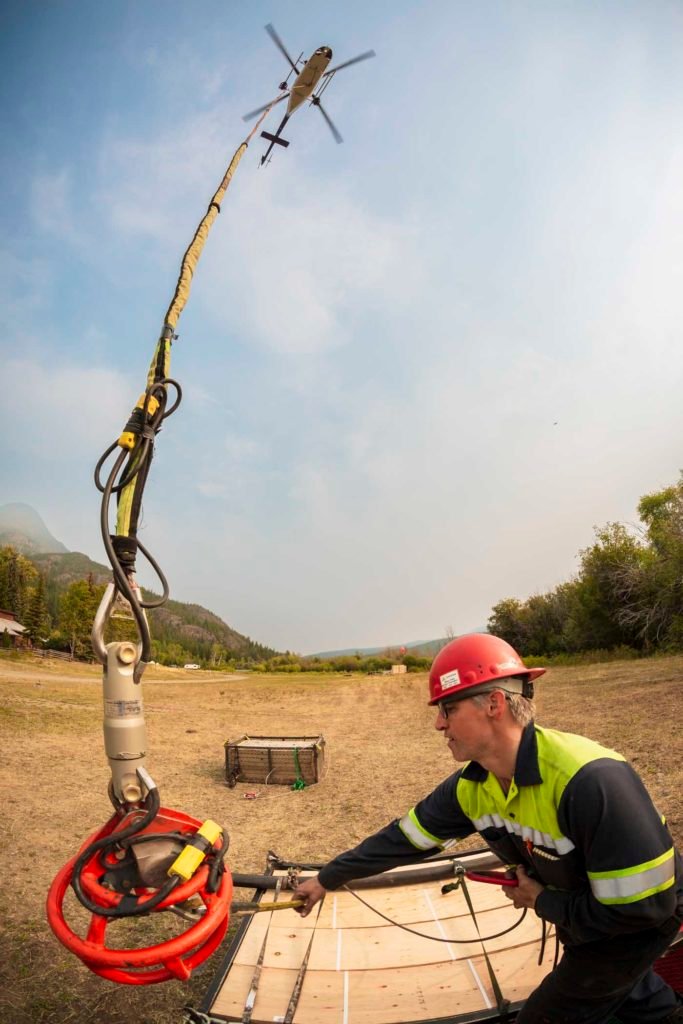
Regarding the 407, King is full of praise for its performance. “It’s got power, speed, it’s easy to fly, it’s steady, stable — it’s almost like cheating flying this thing!”
He said the increase in performance becomes easily apparent when flying up Mount Waddington — the province’s highest peak at 13,186 feet (4,019 meters) above sea level. Just a 10-minute flight from White Saddle’s base, Waddington is a popular draw for tourists, climbers, researchers, and filmmakers (the company worked on the movies K2 and Seven Years in Tibet).
While Mount Waddington is beautiful, flights there are also among the most challenging work White Saddle does due to the altitude and wind.
“I’m used to flying a Bell 47 to these places, then a JetRanger that has no power, then a LongRanger that works very well. And then all of a sudden, with the 407, you go up there, and you think, ‘I remember struggling to get into this place,’ — but with a 407 it’s almost too easy,” said King.
He added that the glass cockpits of both the GXP and GXi (featuring the Garmin G1000H and G1000H NXi, respectively) were “beautiful.”
The 407s have also proved popular with clients. And from the beginning, the Forest Service has been White Saddle’s biggest customer. “They’re good people, good friends, [they want] good, safe flying. Everything’s good about them,” said King.

Fire work with the Forest Service typically starts in mid-May, with the 407 being used primarily for initial attack with a 216-US gallon (820-liter) Bambi Bucket.
King describes the 407 as “the ultimate initial attack” aircraft.
“With a 407, the crews can take a pump or they can take hose, they can take everything they need — overnight gear, some groceries — you’ve got tons of power, and you can always go basically with full fuel.”
With a four-person crew, one will take a truck while the others fly in the aircraft. “We’ll go do an assessment, I might throw in a little bit of advice and they’ll call the tankers or we’ll hook the bucket on and put it out,” said King.
In most years, the busy season wraps up in mid-October. The aircraft go for maintenance, and the Kings take a well-earned winter break.
“We don’t do much winter work and we don’t do the heliskiing anymore,” said King. “We used to just a little bit, but it’s just not our thing — it’s hard on the machine and it’s hard flying. We find it better to just park the machine.”

The odd ad hoc piece of flying is accepted, if King is available — a medevac flight, for example, or a request to look at ice levels or to fix a weather station. Over the winter of 2020/21, the company won a unique contract that kept it busy for three months — aerial support for the eighth season of the TV survival series Alone, set in nearby Chilko Lake.
“That was a lot of fun,” said King. “Most of the flying was just cleaning the ice off the solar panels for their repeaters so they could keep in contact in case they had any issues.”
The next generation
The third generation of King — Mike and Audrey’s son, Patrick — officially joined the company in 2005. Today, he serves as White Saddle’s maintenance manager/aircraft maintenance engineer (AME), working alongside Ian MacDougall, who has been helping maintain the company’s fleet for years.
Like his father, Patrick began his career at VIH after finishing his apprenticeship, building his experience with the West Coast aviation giant before joining the family business.
“If we can help it, we tend to just carry out the field maintenance — scheduled inspections, troubleshooting, track and balance, etc. — at our hangar,” said Patrick. “We have done full engine changes/turbine sections in the past, but the last couple of winters we’ve been working closely with Alpine Aerotech out of Kelowna, B.C. — and others as well — to help carry out and streamline our larger jobs.”
He said the main challenges of his work are the logistical issues sometimes presented by the company’s remote location.
“We try to not be too hard on our machines if we can,” said Patrick. “Moving drills and heavier lifts are things the 407 is great at, and the main thing we keep an eye on are the elastomerics, rod end bearings and the usual stuff that tends to naturally wear over time.”
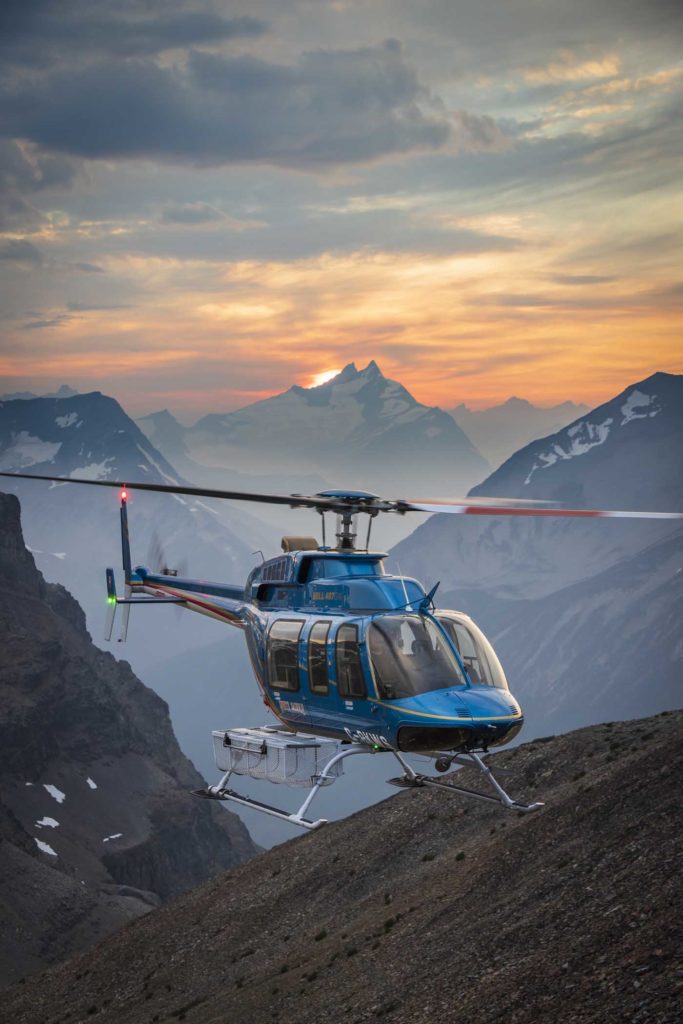
In terms of the 407, he said the more experience he gets working on it, the more he enjoys it, praising the product support of Bell and Rolls-Royce.
In addition to Mike, Audrey and Patrick, White Saddle generally employs at least one contract pilot. Mike admits that in his 45th year of flying, there are certain jobs he just doesn’t enjoy doing anymore.
“I’ve been cutting back on the flying and I kind of give our contract guy as much flying as I can, because we pay him by the hour — and they’re here to fly,” he said. “We’ve been through several contract guys and they seem to like flying these new machines. We’re busy enough that we can keep them happy and they can make a decent wage, use good equipment, receive good maintenance with our son, and it seems to work out pretty well.”
As with the flying, King is also looking to gradually hand over the reins of the company, with Patrick set to take over at the helm in the coming years.
With a well-established reputation among its customers, and a modern fleet at its disposal, White Saddle looks well placed as it prepares to begin its next chapter led by a new King.






